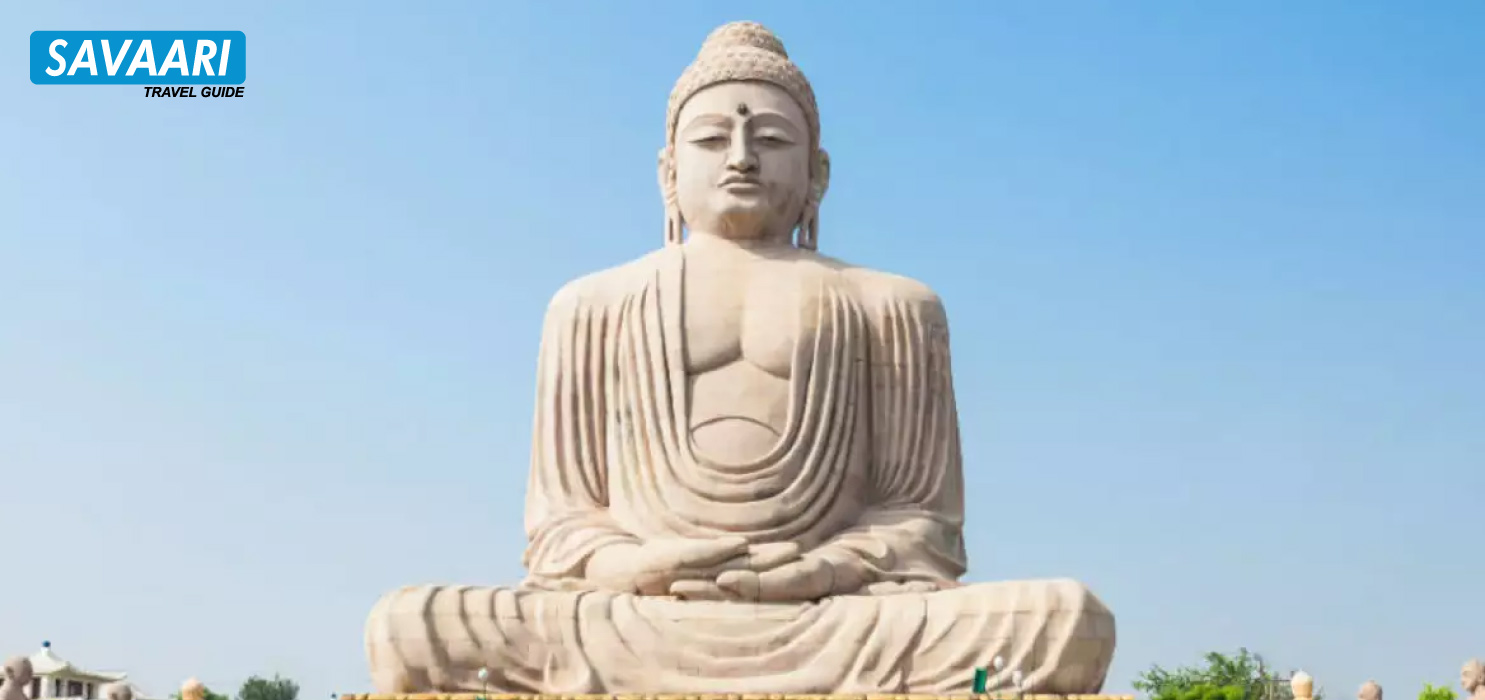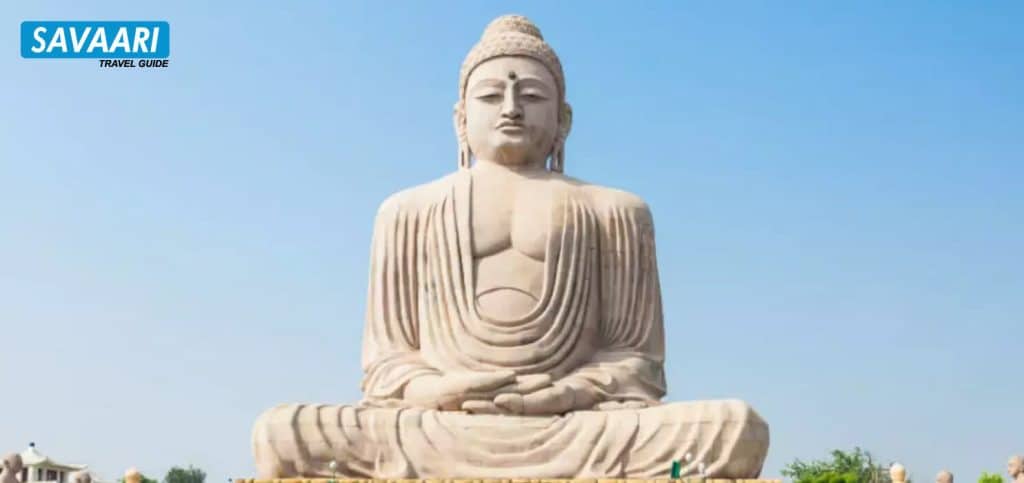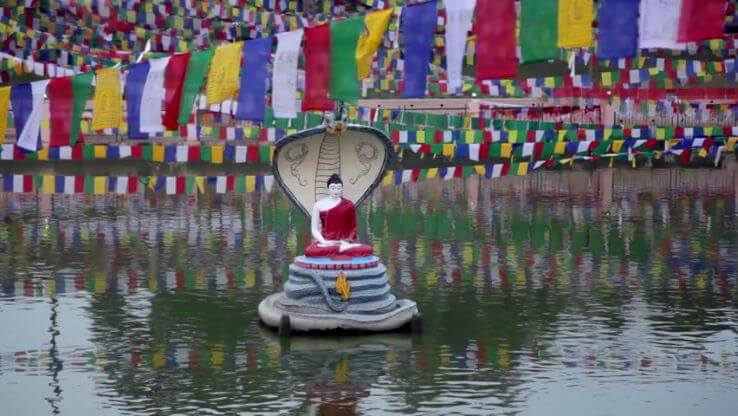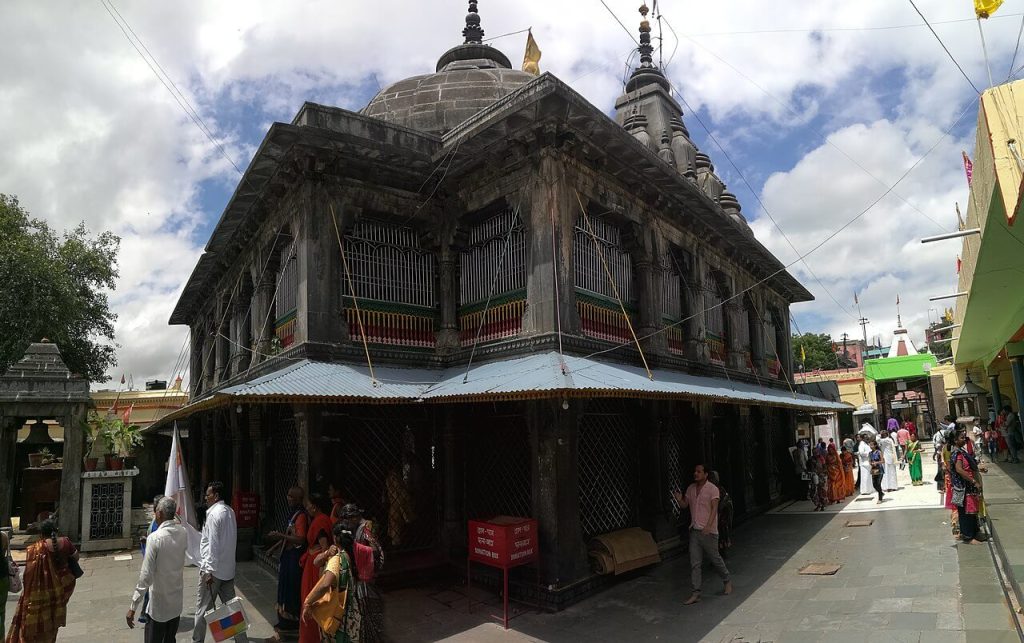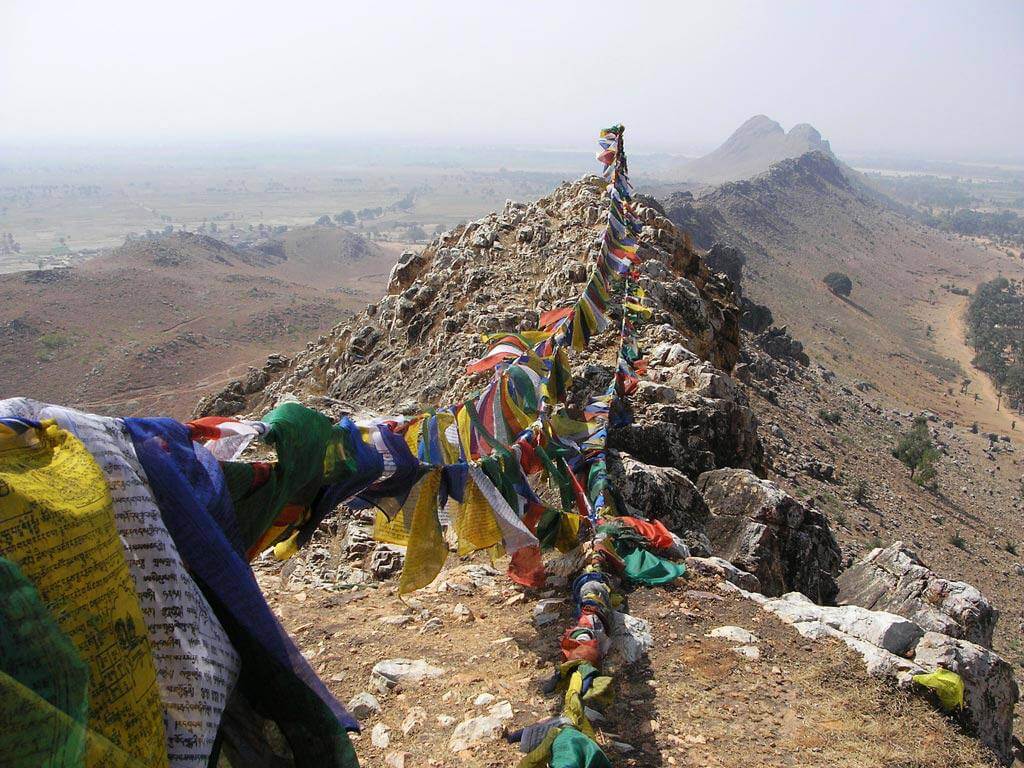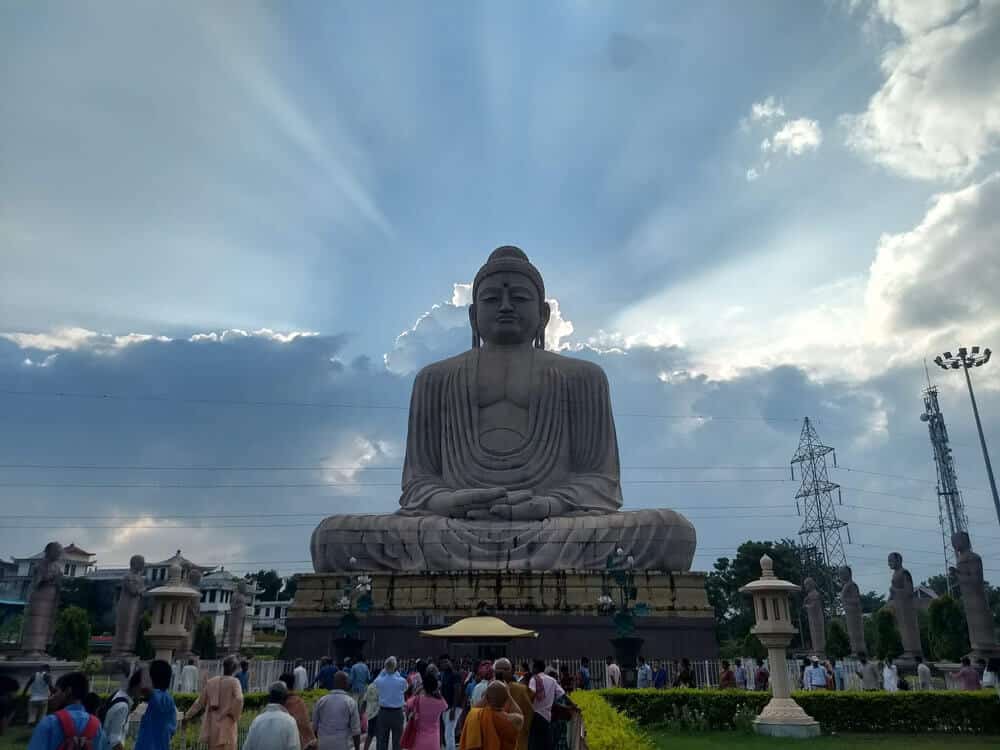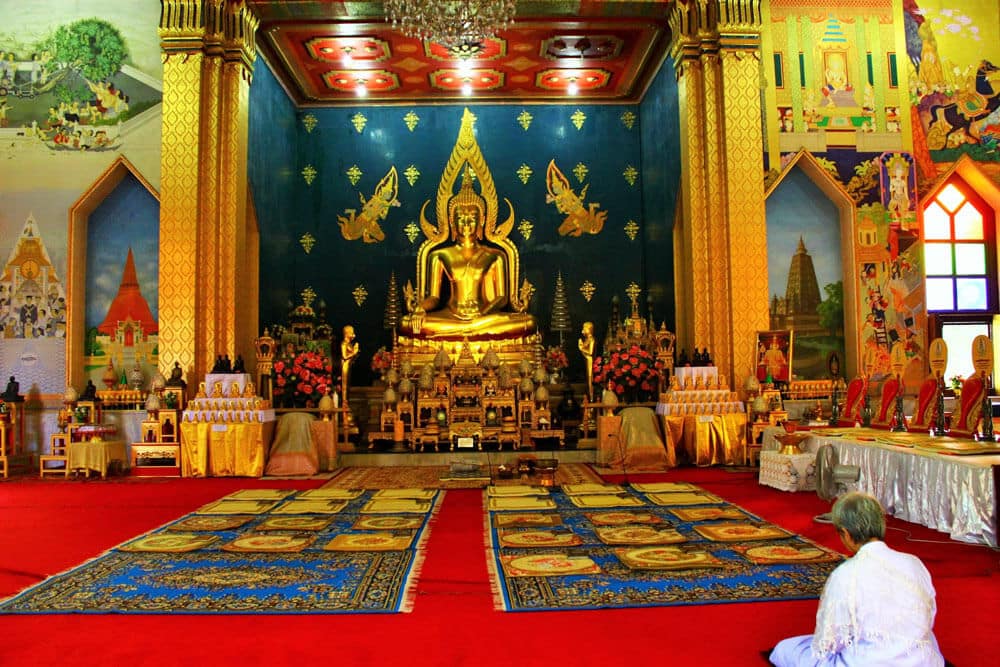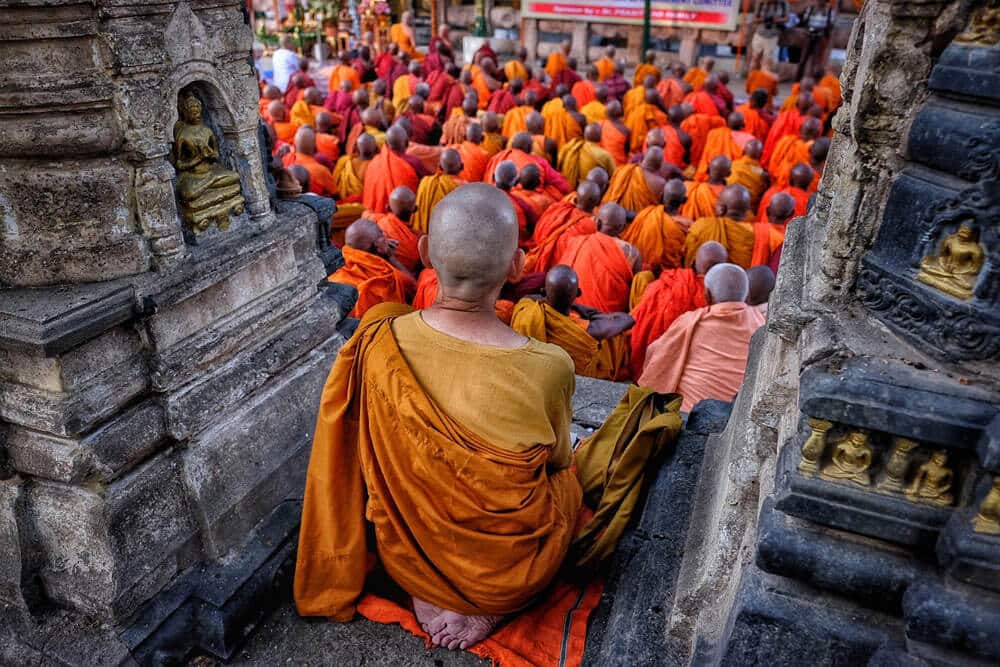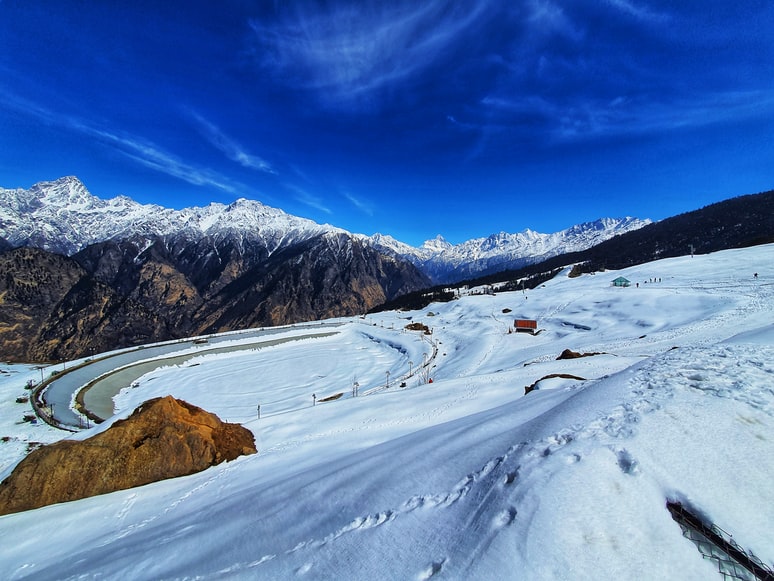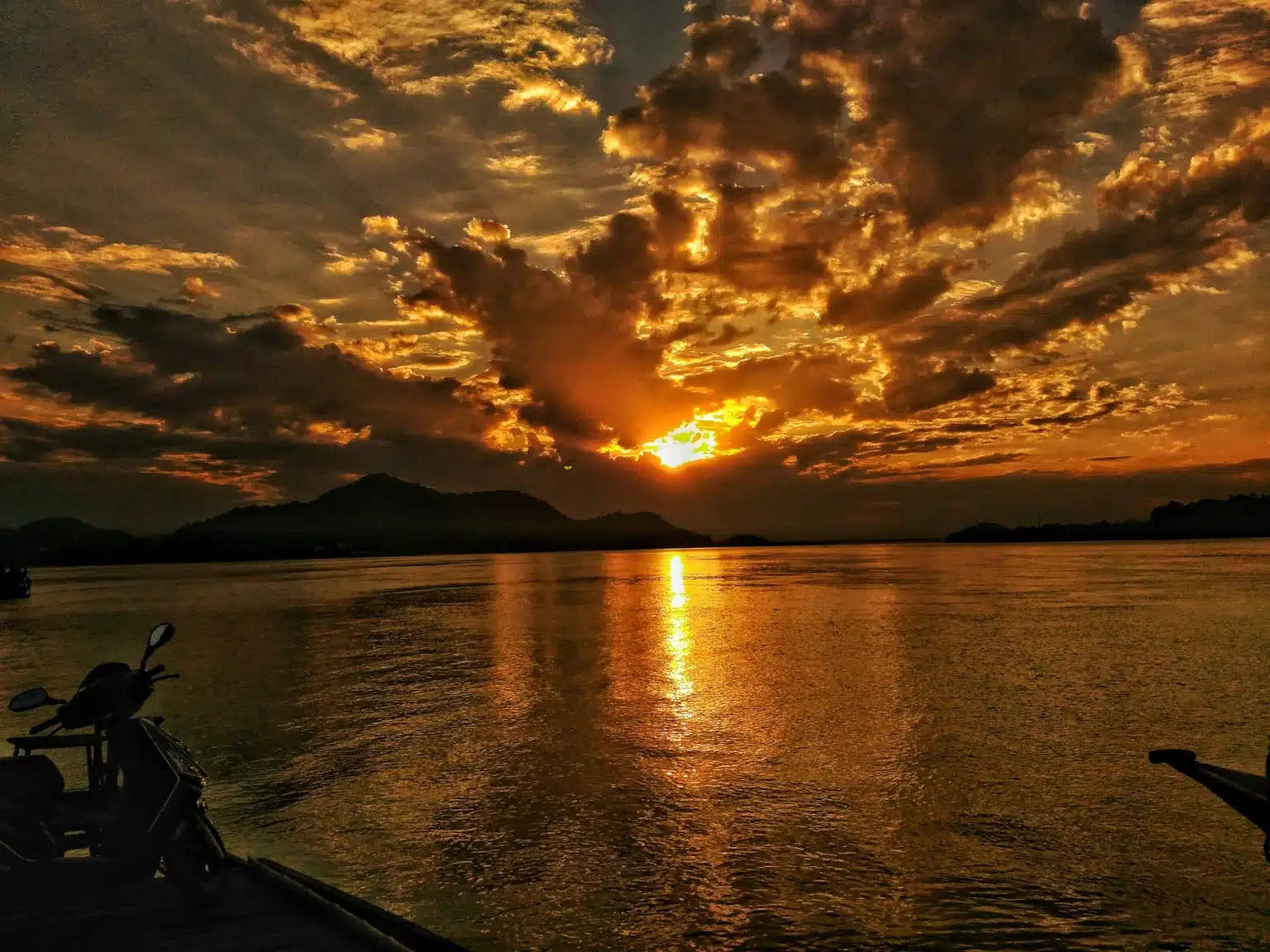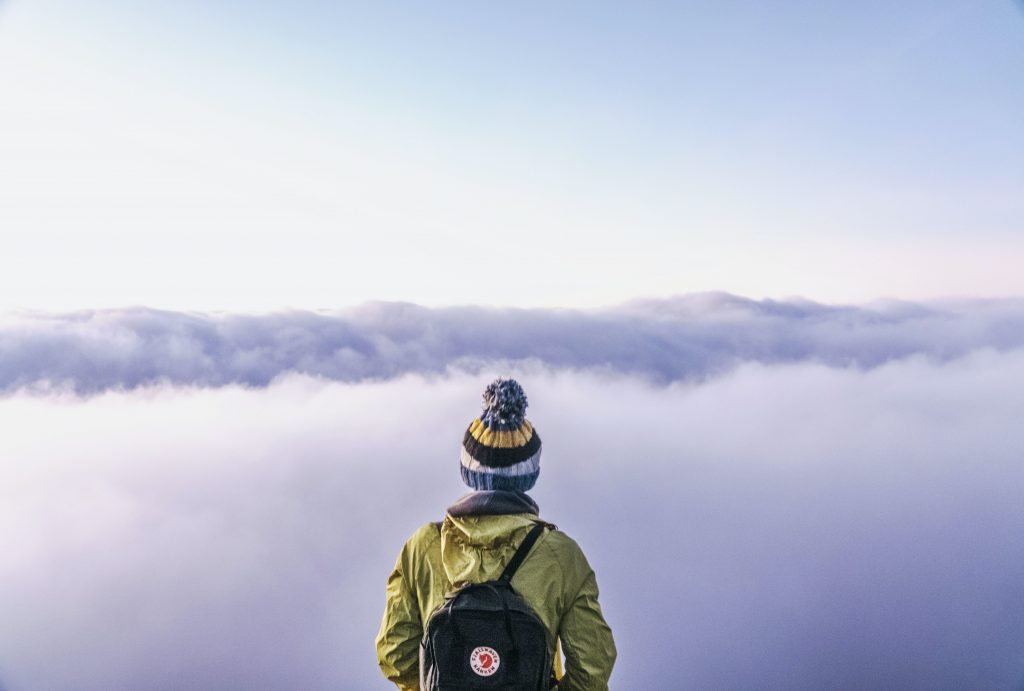The sacred site of Gaya is situated in its own premise, 110 KM from Patna, in Bihar. It is predominantly known for the Mahabodhi Temple or the Bodh Gaya Mandir. The temple complex, with all the monasteries and viharas (Buddhist learning centres), collectively form a major religious and spiritual destination for Buddhists and Hindus alike. If you’re planning to explore the region, you can easily arrange for a car rental in Patna to conveniently travel to Gaya and discover its sacred wonders at your own pace.
Table of Contents
- Things to do in Bodh Gaya
- More about Bodh Gaya
- How to Plan a trip to Bodh Gaya
- Places to stay in Bodh Gaya
Things to do in Bodh Gaya
Apart from the Mahabodhi Temple or Bodh Mandir, there are many other sites that you cannot miss. Here are some of the best places to visit in Bodh Gaya.
- Visit temples and monasteries from other countries – the complex houses a Chinese temple, a Japanese Nippon temple, a Burmese temple, a Thai monastery, a Bhutanese monastery, and a Sinhalese temple. Each of these structures reflects their country’s ethnic art and architectural style, mythology and historical narratives.
- Explore the Tibetan market – run by Tibetan refugees in India, the flea market is a colourful display of handmade art and craft items, clothing, religious books, ritualistic items, and even food.
- Spend some time by the Muchalinda Lake – a water body adjacent to the Mahabodhi temple, this is a serene spot in the complex. The lake is also associated with mythological lore about Buddha, wherein he was protected from the storm by the snake king Muchalinda, during his days of meditation under the Bodhi Tree.
- Discover the Bodhgaya Archaeological Museum – Gain insights into Buddhism’s history through its impressive collection of ancient artifacts.
- Walk around the Lotus Tank – Enjoy the serenity of this picturesque pond believed to be a bathing spot for Buddha.
- Take a day trip to Rajgir – Explore the nearby ancient city with its fascinating historical sites like Gridhakuta Hill and Venuvana Monastery.
Places to visit in Bodh Gaya
While the main attraction of Bodh Gaya tourism is the temple and its surrounding complex, many other Bodh Gaya tourist places are also worth a visit and make your vacation truly holistic. Here are a few other places to visit near Bodh Gaya –
1. Gaya
About the Place: The central district and an ancient town of historical, mythological, and religious significance, Gaya is one of the most sacred places for Hindus and Buddhists alike. The second-largest city of Bihar (after Patna), Gaya has evolved as a pilgrim centre and a major attraction for travellers from all over the world. The significance of this holy town dates back to as far as Ramayana and Mahabharata and to the era of Gautam Buddha.
Timings: NA
Entry Fee: NA
Best time to visit: September to January (April – May for the Buddha Purnima celebration)
How to reach: The distance from Gaya to Bodh Gaya is 15.2 KM via NH 22 and takes about 30 minutes by car. There are no buses available on this route and you will need to book a cab or rent a local car to travel.
2. Dungeshwari Hills
About the Place: It is said that Buddha spent a few years in these hills before travelling to Bodh Gaya. The hills are known for their natural caves and rock shelters. There are ancient stupas and relics of shrines that still exist amid the lush greenery. The scenic locales of Dungeshwari are also apt for day treks and nature exploration. In winter, there might be an opportunity of spotting migratory birds.
Timings: NA
Entry Fee: NA
Best time to visit: October to February
How to reach: The hills are located at about 14 KM from the temple and you can book a cab to drive to the hills and spend the day there.
Places to visit near Bodh Gaya
Nalanda
Located around 90 kilometers from Bodh Gaya, Nalanda is renowned for its ancient Nalanda University ruins, a UNESCO World Heritage Site. Explore the archaeological remains and learn about the rich history of one of the oldest universities in the world.
Barabar Caves
Located about 60 kilometers from Bodh Gaya, the Barabar Caves are ancient rock-cut caves dating back to the Mauryan period. Marvel at the intricate carvings and architectural marvels of these caves.
Pawapuri
Situated approximately 95 kilometers from Bodh Gaya, Pawapuri is a sacred Jain pilgrimage site. It is believed to be the place where Lord Mahavira, the founder of Jainism, attained Nirvana. Visit the beautiful marble Jal Mandir and soak in the spiritual ambiance.
Varanasi
Situated approximately 250 kilometers from Bodh Gaya, Varanasi is one of the oldest inhabited cities in the world. Experience the spiritual vibes, take a boat ride on the Ganges River, and witness the famous Ganga Aarti ceremony. Visit the ancient temples and immerse yourself in the rich cultural heritage of this holy city.
Places to eat in Bodh Gaya
- City Café Restaurant
- Siam Thai Restaurant
- Hari Om International Café
- Loyag Tibetan Restaurant
- Nirvana The Veg Cafe
About Bodh Gaya
Bodh Gaya Temple History
It is also regarded as an epicenter of culture and learning of Buddhism. This site in Gaya is also considered a hallowed ground, especially the Mahabodhi tree, under which Buddha is said to have achieved enlightenment. The tree still exists on the premises and is this historical and religious reference that Gaya is famous for.
In Buddhism, this place is the most important of the four major pilgrimage sites related to the life and journey of Buddha. The others being Lumbini, Kushinagar, and Sarnath. The Gaya temple is the holiest of all. In ancient times, in Buddha’s lifetime, the place was known as Uruwela, situated on the banks of the river Lilajan.
Bodh Gaya’s history dates back to the time of emperor Ashoka in the 3rd century BCE. He commissioned the first temple in Gaya when he embarked on his journey of soul-searching through Buddhism. The Mahabodhi Temple was one of the earliest Buddhist temples built completely of brick.
The architecture of Gaya Temple
- The design and construction of the temple are said to have a major influence on Indian architectural styles that followed in the later centuries. The complex consists of the 50-meter-high main temple, the Vajrasana or the Diamond Throne of Buddha, the sacred Bodhi Tree, and six other sacred grounds, surrounded by ancient votive stupas.
- There is also a Lotus Pond, right outside the enclosure. Both the temple and the pond areas are surrounded by circular passages of two to three levels.
- The main temple is 11 meters high and is built in classical Indian temple-style construction. There are entrances from the east and north. The moldings bear intricate carvings of flowers and geese. Above these, there is a series of niches with images and sculptures of Buddha. The niches then rise up to the temple tower.
- On the four corners of the temple parapet, there are four statues of Buddha enshrined in small chambers. Each of these chambers also has towers. The temple stands in front of a small court and a doorway that leads into a small hall or the main sanctum, where a gilded, 5 feet statue of Buddha is seated on a dais.
The name Bodh Gaya was not in use until the 18th century. Before that, the place was called Uruwela, Sambodhi, Vajrasana, or Mahabodhi. Ashoka named the main monastery – Bodhimanda – vihara.
Apart from the Mahabodhi Temple, the massive complex of Gaya houses several other monasteries and temples, each built by kings and rulers after Ashoka and also by other Buddhist communities from Bhutan, Nepal, Sri Lanka, Myanmar, Thailand, Vietnam, China, Taiwan, and Japan, where Buddha travelled and preached. Thus, Gaya became a multicultural destination for Buddhists from all over the world. Most of these structures date back to the 5th and 6th centuries CE.
In the present day, the complex also houses a giant, 80-foot statue of Buddha, also called the Great Buddha Statue. It was unveiled in 1989 and consecrated by the 14th Dalai Lama.
Hidden facts about Bodh Gaya
Here are some interesting facts about this place:
- The Bodhi tree found on the premises of the temple complex was originally a sapling of the Maha Bodhi tree from Sri Lanka.
- It was 200 years after Buddha attained nirvana, in 250 BCE, that Ashoka visited this place to establish a monastery and make this a holy shrine.
- The Great Buddha statue that stands today, was the first-ever giant Buddha statue built in the history of India.
Bodh Gaya UNESCO World Heritage Site
The Bodh Gaya temple of Bihar is recognized as a World Heritage site for its massive role in India’s religion, spirituality, and culture. The complex of this place spans 4.8600 hectares and encompasses iconic relics from the 5th to 6th century CE and depicts the antiquity of this period of the Indian subcontinent. An epicenter of learning and self-discovery for Buddhists as well as for other religious communities, Gaya remains a revered centre for India’s heritage. As such, in 2002, UNESCO declared the Mahabodhi Temple and its premises as a World Heritage Site.
[Also Read: 15 Must-Visit Picturesque Villages of India]
How to plan a trip to Bodh Gaya
How to reach Bodh Gaya
You will notice that Auto rickshaws, cars and buses are restricted within Bodh Gaya to maintain peace and decorum. Private cars require a special permit to enter.
By Train
Gaya Junction is the nearest railway station to Bodh Gaya and Patna is the nearest major railhead. There are many daily and weekly trains connecting Bodh Gaya to other major cities in India.
By Road
Gaya is well-connected to the capital city of Patna and other towns of Bihar. It is 110 km and takes about four hours from Patna to Bodh Gaya by road via NH 22. There are several state-run buses via Rajgir. You can also avail a special caravan service called Wonder on Wheel, between Patna and Bodh Gaya, from BSTDC. You can also book a cab from Patna to Bodh Gaya and enjoy a scenic road trip to your destination.
By Flight
The nearest airport is at Gaya, about 7 KM away. Several daily flights are available from other cities like Patna, Kolkata, Varanasi, Delhi, Allahabad, etc. You can book a Patna airport taxi or rent a car to reach this place.
Best time to visit Bodh Gaya
Being in the Gangetic plains, Gaya experiences classic plainland weather with hot and humid summers and cold, chilly winters. Therefore, the peak tourist season is between October to March when the temperatures are pleasant to explore different spiritual attractions for patrons of Buddhism.
Places to stay in Bodh Gaya
- Marasa Sarovar Premiere
- Regency Hotel
- Hotel Raj Darbar
- Hotel Heritage
- Dhamma Grand Hotel
Download our Savaari car Booking app for a smooth and pleasant journey.
Useful travel links
Last Updated on November 25, 2024 by V Subhadra
